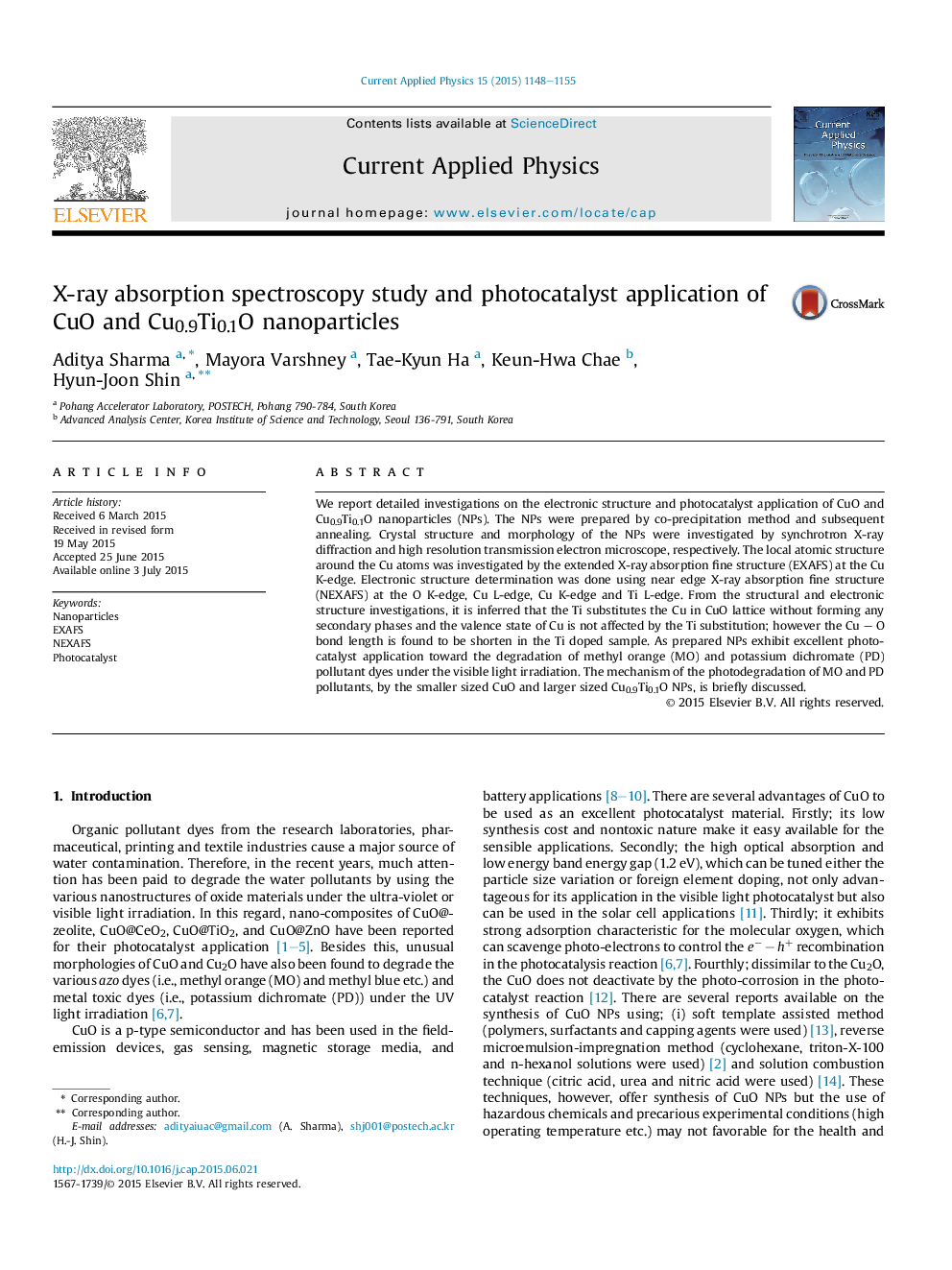| Article ID | Journal | Published Year | Pages | File Type |
|---|---|---|---|---|
| 1785625 | Current Applied Physics | 2015 | 8 Pages |
•CuO and Cu0.9Ti0.1O nanoparticles were prepared using co-precipitation method.•XRD, HR-TEM, EXAFS, NEXAFS and photocatalysis measurements were performed.•Cu+2 valence state was observed in CuO and Cu0.9Ti0.1O nanoparticles.•CuO/Cu0.9Ti0.1O NPs exhibit visible-light driven photocatalyst application.
We report detailed investigations on the electronic structure and photocatalyst application of CuO and Cu0.9Ti0.1O nanoparticles (NPs). The NPs were prepared by co-precipitation method and subsequent annealing. Crystal structure and morphology of the NPs were investigated by synchrotron X-ray diffraction and high resolution transmission electron microscope, respectively. The local atomic structure around the Cu atoms was investigated by the extended X-ray absorption fine structure (EXAFS) at the Cu K-edge. Electronic structure determination was done using near edge X-ray absorption fine structure (NEXAFS) at the O K-edge, Cu L-edge, Cu K-edge and Ti L-edge. From the structural and electronic structure investigations, it is inferred that the Ti substitutes the Cu in CuO lattice without forming any secondary phases and the valence state of Cu is not affected by the Ti substitution; however the Cu – O bond length is found to be shorten in the Ti doped sample. As prepared NPs exhibit excellent photocatalyst application toward the degradation of methyl orange (MO) and potassium dichromate (PD) pollutant dyes under the visible light irradiation. The mechanism of the photodegradation of MO and PD pollutants, by the smaller sized CuO and larger sized Cu0.9Ti0.1O NPs, is briefly discussed.
Graphical abstractFigure optionsDownload full-size imageDownload as PowerPoint slide
